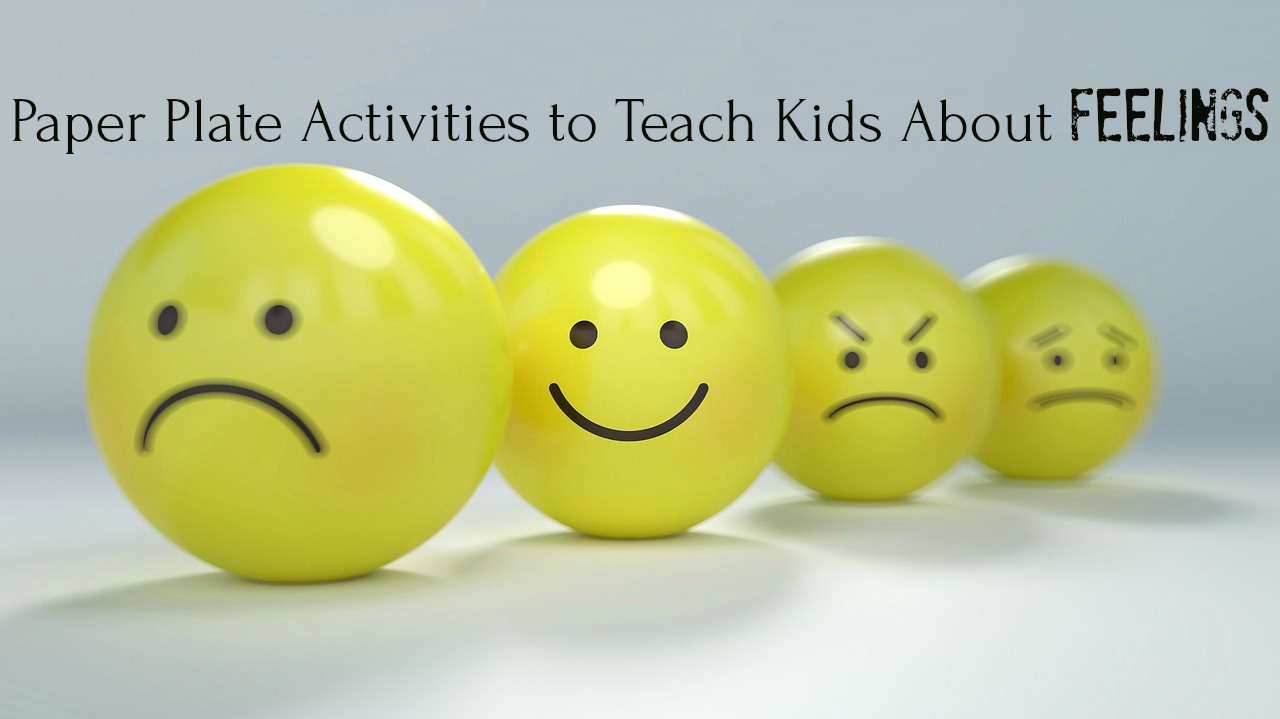Most young children will share their thoughts and feelings freely. They constantly observe those around them and strive to learn and understand the emotions that they are feeling as well as the emotions that are being expressed by those around them.

Smiling, laughing, crying and yelling are some of the more common ways in which people express their emotions. Paper plate faces are an artistic, creative and fun way to teach children about emotions and feelings.
Kindergarten, preschool, and daycare activities involving colors, shapes and design are an ideal way to explore emotions. The children have an opportunity to put their thoughts about emotions and feelings on to paper. In addition, they will have the opportunity to look at and examine other artistic drawings and as a result gain additional insight to the concept of feelings.
Paper Plate Faces – Art Activity
Variety is the spice of life! Using paper plates have the children draw and create faces using a variety of different materials. Cotton balls and yarn can be used for hair; construction paper in different shapes can be for the mouth, eyebrows, mustache, ears, rosy cheeks and more.
Materials Needed:
* Paper plates
* Popsicle sticks
* Crayons or paint
* Pieces of yarn cut into a variety of different lengths
* Cotton balls
* Construction paper cut in to shapes including triangles, circles, half moons, squares and rectangles.
* Glue
There is no end to the creativity of the paper plate activity. Ask the children to create a happy clown face, a silly face or a laughing face.
Paper Plate Faces – Circle Time
When the children have completed their paper plate activity have a circle time and ask each child to share something about their paper plate face.
Questions to ask during Circle Time:
* “What do you like best about your paper plate face?”
* “How does your paper plate face make you feel?”
* “What did you like best about creating your paper plate face?”
* “Look at all the other paper plate faces that your friends have created. What do you like about them?”
Provide each child an opportunity to discuss his or her paper plate, what makes it special and what he or she enjoyed about the paper plate face art activity.
Paper Plate Faces – Puppet Show & Story Time
Have children glue Popsicle sticks to the bottom of their paper plate to create a puppet. At the end of the day or during a period of free play allow the children to create a puppet show or simple play with their paper plate face puppets.
Another great activity with paper plate puppets is to read the children a story and during the story when something good happens or when the main character of the story feels happy have the children raise their paper plates to indicate that the main character is feeling happy. If there are a variety of paper plate faces that are showing sad faces or different emotions it can also be incorporated into the story game. For example, ask the children with sad paper plate faces to raise their puppet when the main character of the story feels sad.
Children love to learn about themselves and about others. Daycare and kindergarten teachers can help children learn about feelings and emotions through art, circle time discussion, puppet play and story time. Parents and homeschool co-ops can also use these ideas to make sure their young children are comfortable with feelings and sharing them with others.

